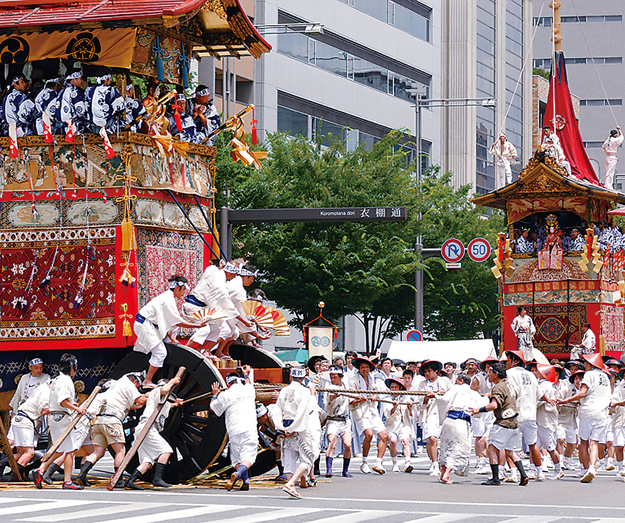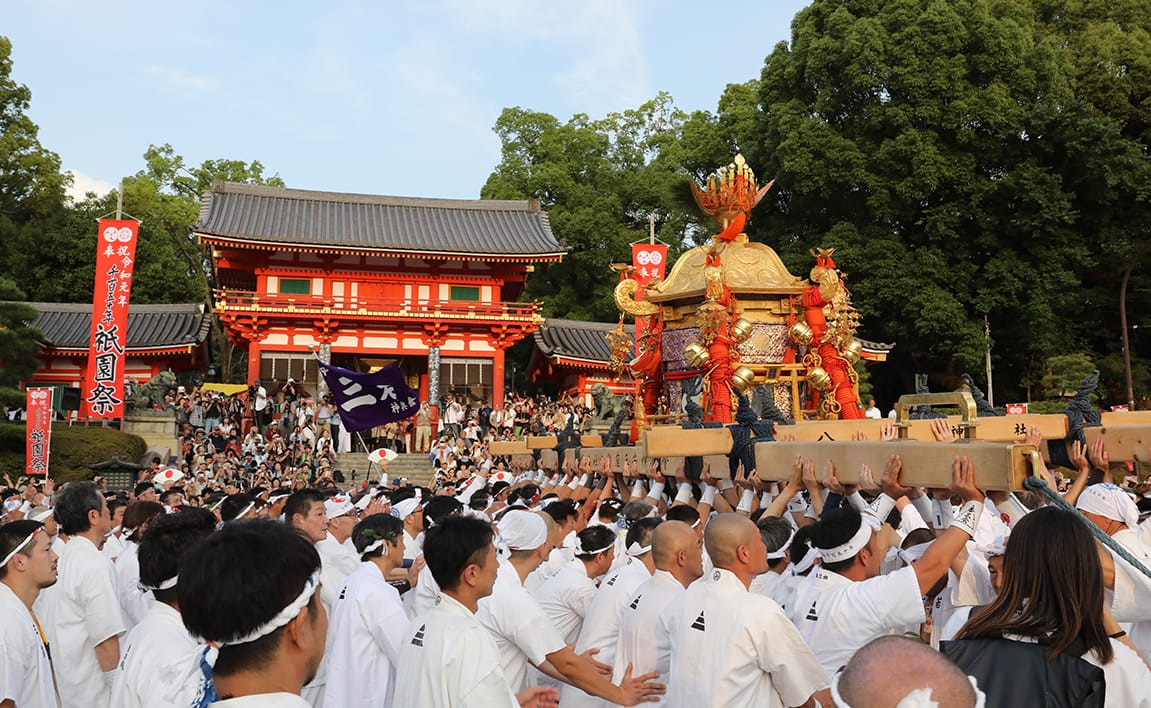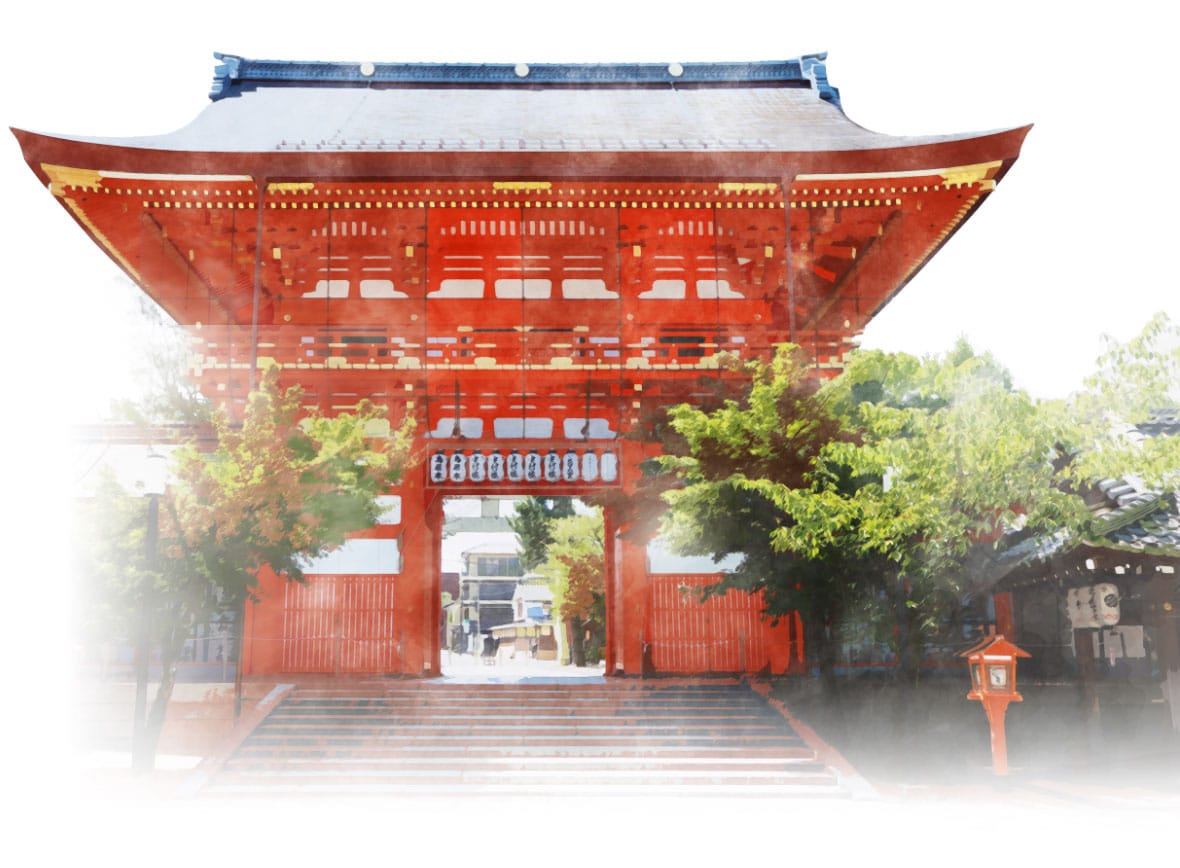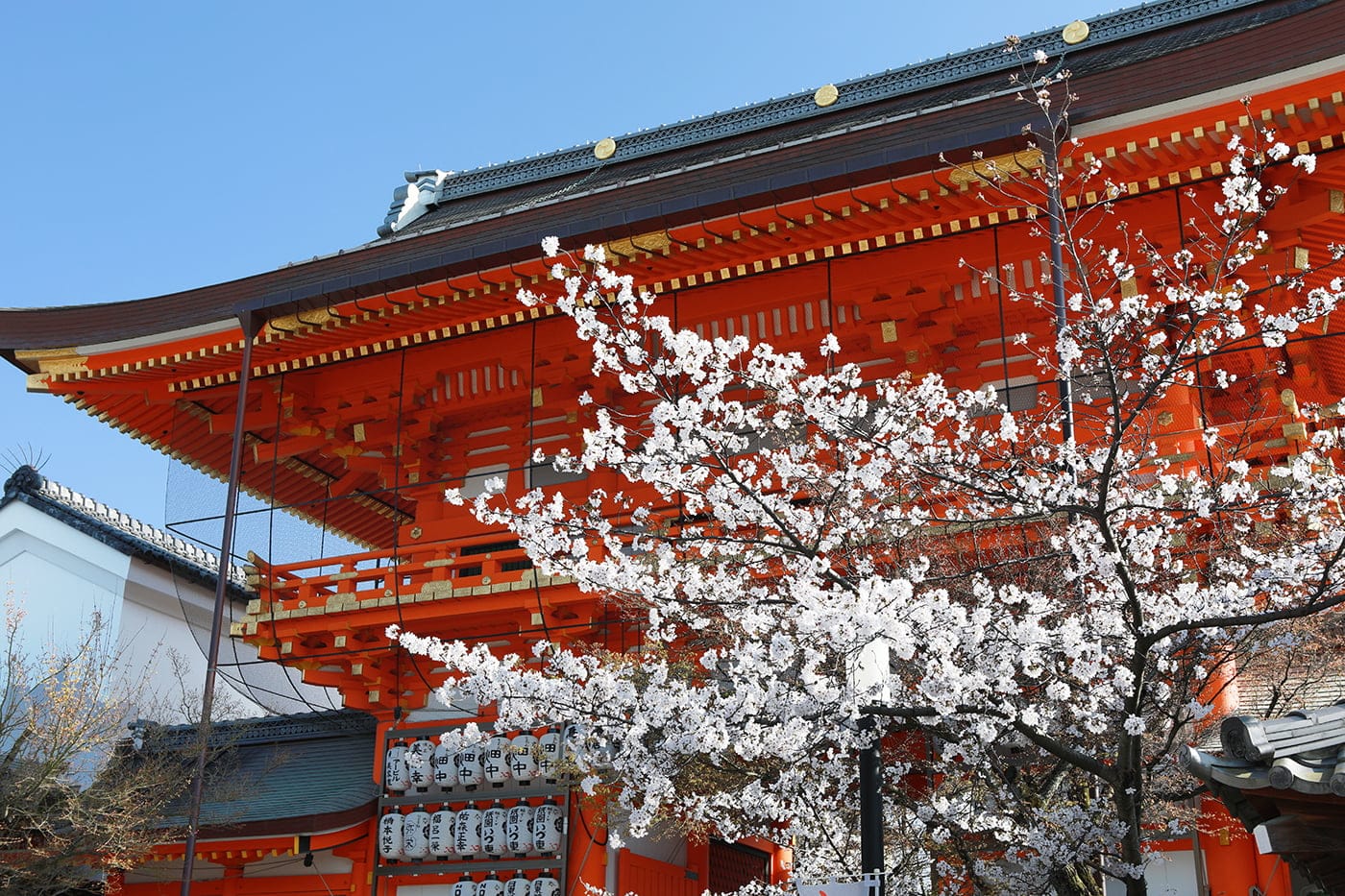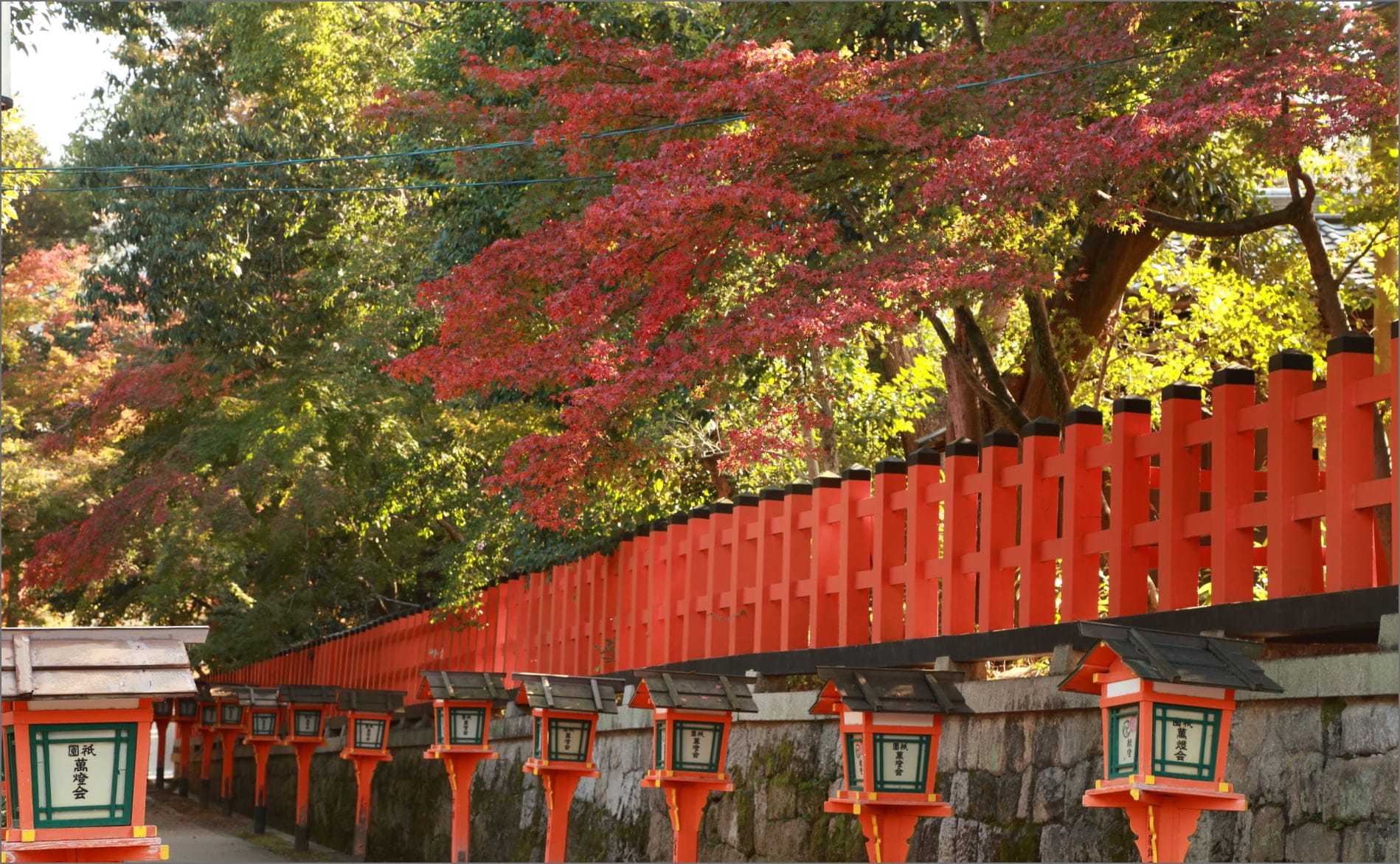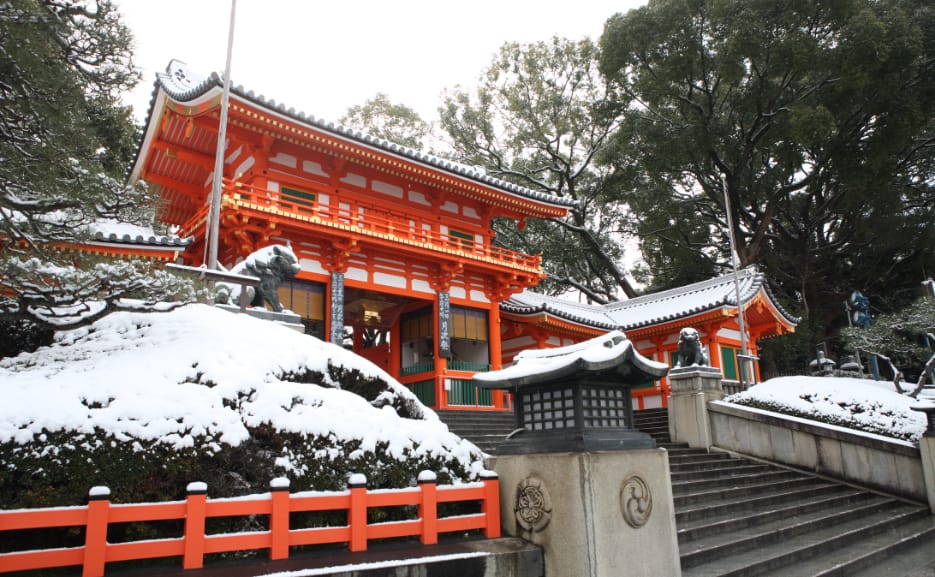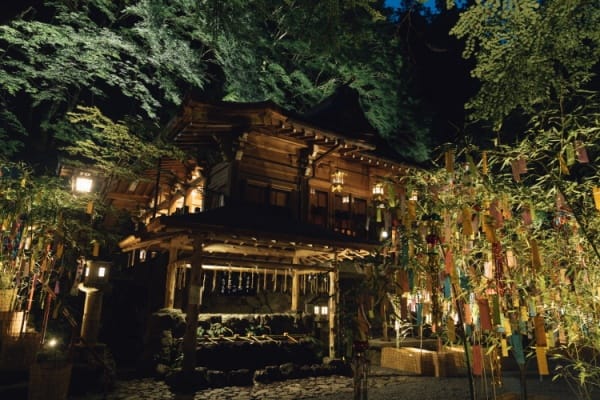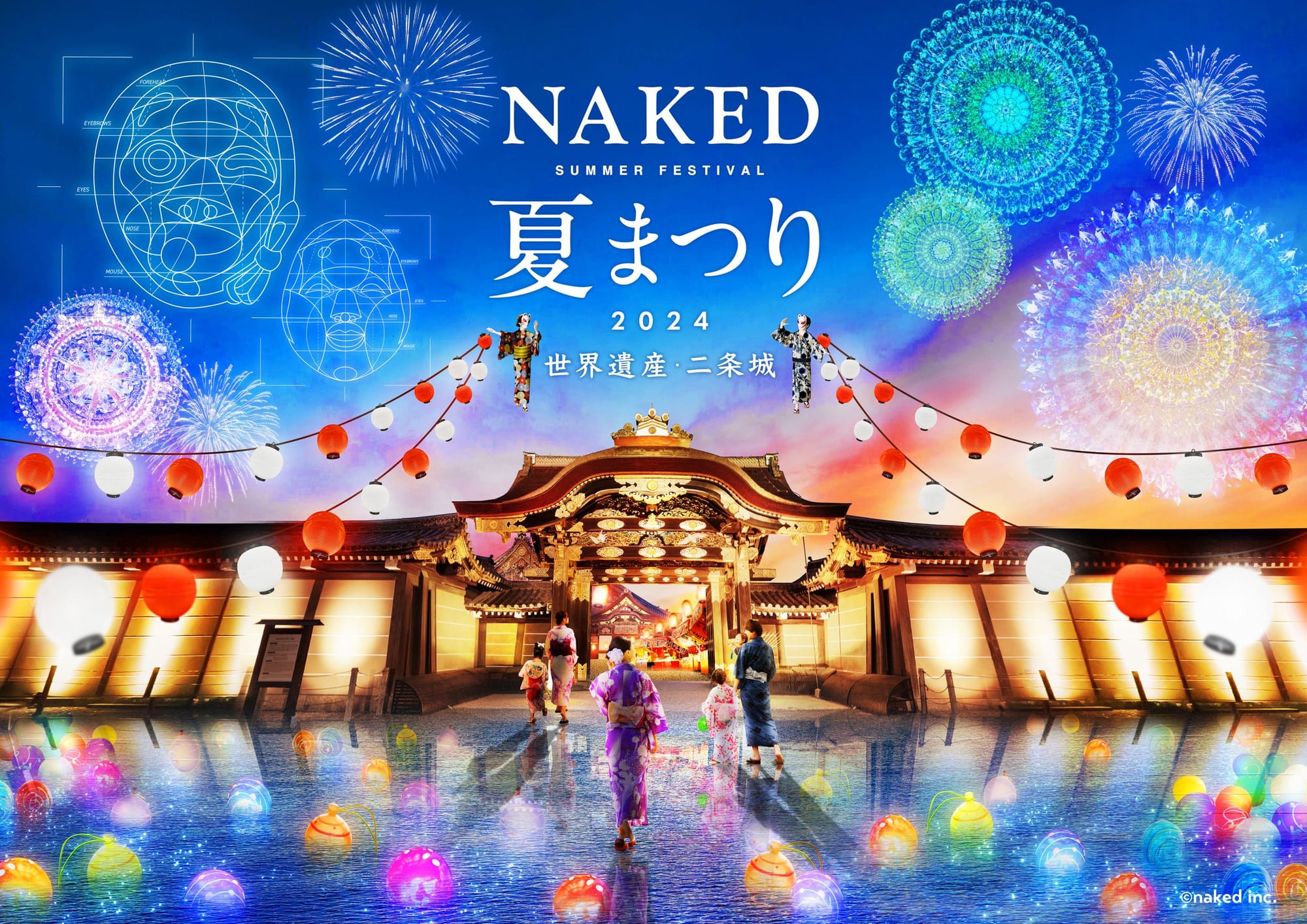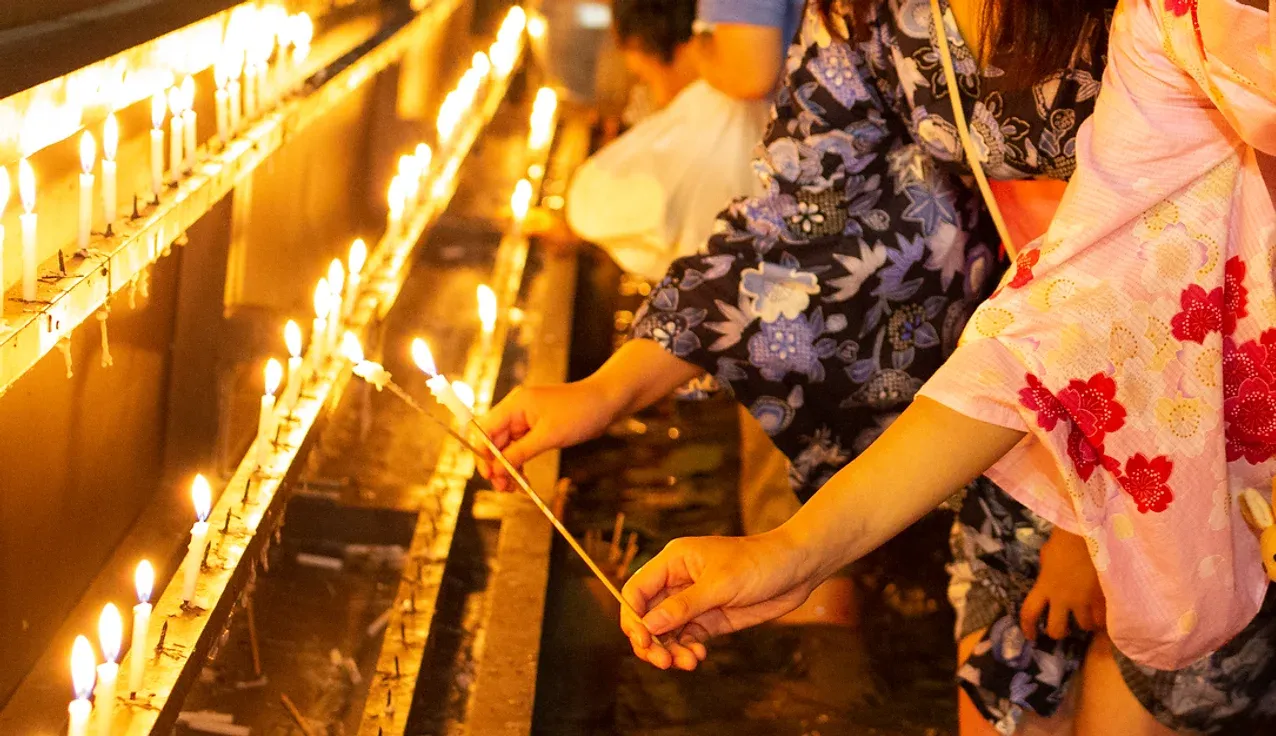Kyoto has served as the imperial capital of Japan for over 1000 years, with emperors residing there throughout this period. Flourishing since 794, numerous temples and shrines were built to protect the capital.
Many of these religious structures have histories spanning hundreds of years, with some even predating 794. Today, these shrines and temples are still cherished, serving as places where one can deeply experience Japan's history and culture.
Many of these ancient shrines and temples continue to host traditional festivals that have been celebrated for centuries. For example, there's the "Mitarashi Festival" at Shimogamo Shrine and the "Inari Festival" at Fushimi Inari Taisha.
In this article, we'll focus on the largest of Kyoto's festivals: the Kyoto Gion Festival.
Kyoto is home to many traditional festivals held at historic shrines and temples
Kyoto is home to numerous festivals that have been passed down through generations. One reason for this is that Kyoto functioned as Japan's capital for a long time, and the shrines and temples built to protect the emperor's residence were highly valued.
Since 794, when the emperor began residing in Kyoto, the city has developed as Japan's political, religious, and cultural center. Many shrines and temples were built to protect the capital from disasters and epidemics, and the festivals held at these sites have been passed down as important events.
Some shrines and temples have strong connections to nature and agriculture, and their festivals have become an integral part of local faith and life.
Numerous festivals and events are held especially from August to October
From summer to autumn, Kyoto hosts many traditional festivals and events. The Kyoto Gion Festival, which we'll discuss in detail later, takes place in July.
In August, there's the Gozan no Okuribi, an event to honor ancestors. In September, Kamigamo Shrine hosts the unique Karasu Zumo festival, which involves crows.
October sees the Jidai Matsuri at Heian Shrine, a festival where you can experience Kyoto's history and traditions.
The Kyoto Gion Festival is a traditional festival with over 1,000 years of history
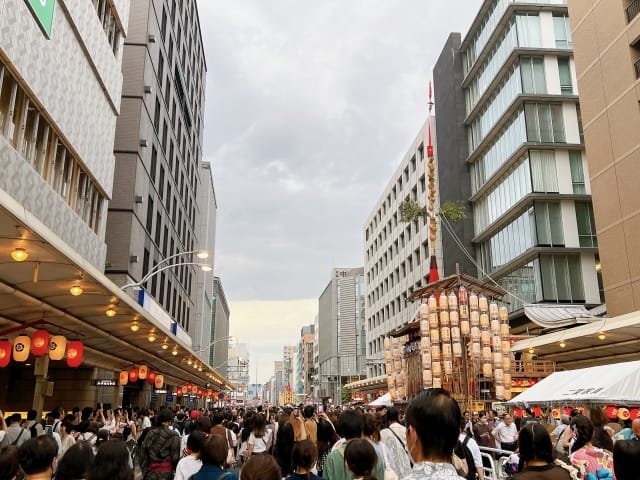
The Kyoto Gion Festival is a traditional festival in Kyoto with over 1000 years of history. It's held annually in July, centered around Yasaka Shrine. The festival originated in the 9th century as a ritual to appease epidemics.
Over time, supported by local Kyoto residents, it evolved into a diverse event featuring the Yamahoko Junko, where magnificent floats parade through the city.
The Kyoto Gion Festival includes various events over about a month. The main attraction is the parade of lavishly decorated floats. Every year on July 17th and 24th, and on the eve of these dates, large crowds gather to watch.
The eye-catching "Yamahoko" floats, standing about 25m tall and weighing over 12 tons, are the highlight of the Kyoto Gion Festival
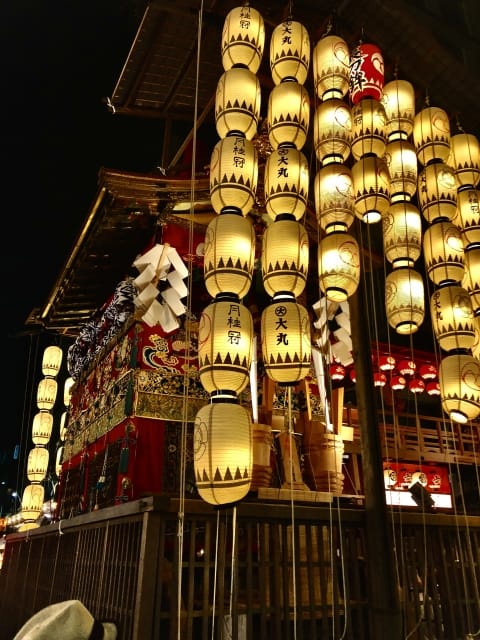
The "Yamahoko" floats, the highlight of the Kyoto Gion Festival, are massive structures standing about 25m tall and weighing over 12 tons. Kyoto's "Yamahoko" are wheeled platforms decorated with roofed structures resembling houses, shrines, or stages, topped with ancient Japanese weapons like hoko (halberds) or choto (long swords).
These floats belong to different neighborhoods in Kyoto, and more than 30 intricately decorated Yamahoko parade through the city. People ride on these human-pulled floats, playing traditional festival music and chanting to enhance the festive atmosphere.
Some of the Yamahoko have hundreds of years of history, featuring paintings by historically famous artists and culturally valuable textiles. The Yamahoko are often called "moving museums." When visiting the Kyoto Gion Festival, be sure to pay attention to the beautiful decorations on each float.
Three highlights of the Kyoto Gion Festival, the most exciting time of the year
The "Yoiyama" event, considered the eve of the Kyoto Gion Festival
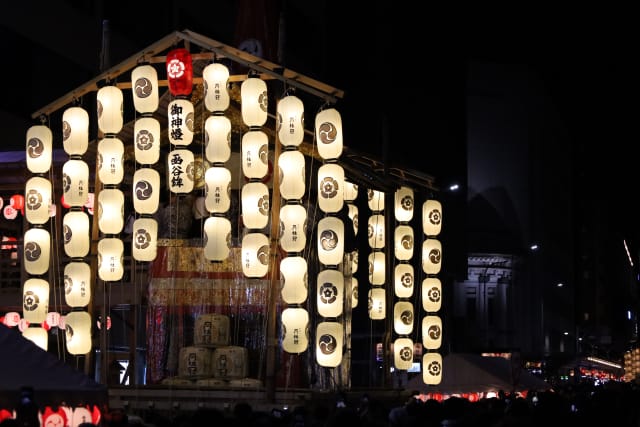
One of the most exciting events of the Kyoto Gion Festival is the "Yoiyama" period, which serves as a pre-festival celebration. Yoiyama typically starts in the evening after sunset. Over 30 Yamahoko floats are displayed throughout the city, beautifully illuminated by traditional Japanese lanterns.
Around each float, visitors can purchase chimaki, which are protective charms, making the area bustling with people. During Yoiyama, some grand residences open their doors to display art treasures, and you can hear traditional festival music. It's a perfect opportunity to experience Kyoto's elegant atmosphere.
Enjoying the festivities in the cooler evening hours after the daytime heat subsides is another benefit of Yoiyama. During this period, the entire city of Kyoto is enveloped in the Gion Festival atmosphere, making it a special time to visit if you have the chance.
The "Yamahoko Junko," the main event of the Kyoto Gion Festival
The main event of the Kyoto Gion Festival is the "Yamahoko Junko." This is a parade where the traditionally decorated Yamahoko floats are pulled by residents of each neighborhood. The sight of these massive floats, some reaching 25m in height and weighing 2 tons, being pulled by many people while traditional festival music plays, is a quintessential summer scene in Kyoto.
This parade is held twice a year, on July 17th and 24th. The July 17th parade is called Saki Matsuri (first festival), while the July 24th parade is called Ato Matsuri (latter festival). Different Yamahoko floats parade through Kyoto's streets on each day.
There are 23 floats on the 17th and 11 floats on the 24th. The 17th tends to be more crowded with tourists, so if you prefer a more relaxed experience, attending the Ato Matsuri on the 24th is recommended.
The "Mikoshi Togyo," the climax of the Kyoto Gion Festival
Source: Official website
The climax of the Kyoto Gion Festival is the "Mikoshi Togyo" event. This is a parade of the deity of Yasaka Shrine, held after the Yamahoko Junko on July 17th and 24th. While the Yamahoko Junko is a parade by town residents, the central mikoshi (portable shrine) in the Mikoshi Togyo is believed to carry the deity of Yasaka Shrine.
In fact, the Yamahoko Junko is said to have originally served as a way to clear the path for the mikoshi carrying the Yasaka Shrine deity to tour the town. The mikoshi parades through the streets purified by the Yamahoko Junko.
The mikoshi parades through the town accompanied by energetic chanting. This process is believed to purify and protect Kyoto. The Mikoshi Togyo is the core of the Kyoto Gion Festival, demonstrating that it's not just a tourist event, but a sacred traditional Japanese ritual.
Yasaka Shrine, the heart of the Kyoto Gion Festival
Yasaka Shrine: A historically significant shrine responsible for warding off epidemics in the capital
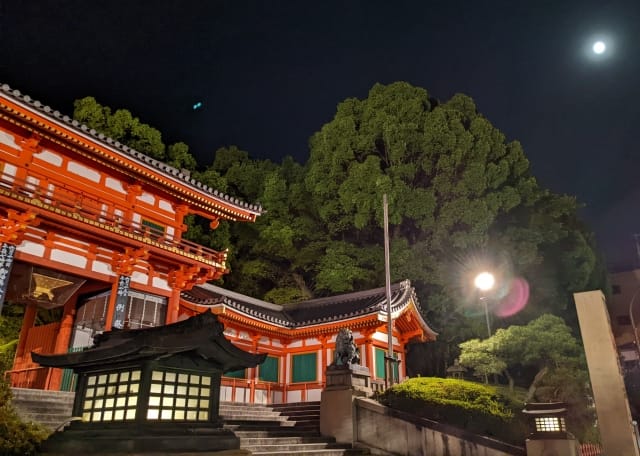
Yasaka Shrine has long been revered as a shrine for warding off epidemics in Kyoto. The main deity of Yasaka Shrine is Susanoo-no-Mikoto, a god believed to dispel all calamities. Yasaka Shrine has been protecting Kyoto since 656, and after Kyoto became the capital in 794, it took on an even greater role in protecting the city from disasters.
The Kyoto Gion Festival is the symbolic festival of Yasaka Shrine. Even today, Yasaka Shrine is famous not only for warding off epidemics and misfortunes but also for benefits related to matchmaking and beauty, attracting many visitors throughout the year.
The National Treasure "Main Hall" and 29 Important Cultural Properties are must-see attractions
Source: Official website
A highlight of Yasaka Shrine is the "Main Hall" (Honden), which is designated and specially protected by the government as a National Treasure. Generally, the main buildings of a shrine consist of the Honden, where the deity is enshrined, and the Haiden, where visitors pray to the deity.
This Main Hall, rebuilt in 1654, is characterized by having both the Honden and Haiden covered by a single large roof.
The shrine grounds also feature 29 structures and objects designated as Important Cultural Properties by the government, allowing visitors to sense the depth of history and culture.
The changing seasonal beauty of Yasaka Shrine's natural surroundings is not to be missed
One of the charms of Yasaka Shrine is its ability to showcase different beautiful landscapes as nature changes with the seasons.
From spring cherry blossoms to summer greenery, autumn foliage, and winter scenery, each season offers impressive views. No matter which season you visit, you can fully enjoy the unique beauty of that time of year.
Beautiful cherry blossoms at Yasaka Shrine in spring
Source: Official website
In spring, Yasaka Shrine becomes even more beautiful when the cherry blossoms bloom. The shrine grounds feature various types of cherry trees, including Somei Yoshino, the most famous Japanese cherry blossom variety with single petals, and Shidare-zakura, or weeping cherry trees, with naturally drooping branches covered in blossoms.
The sight of soft pink petals, almost white in appearance, adorning the shrine buildings creates a vibrant spectacle unique to spring.
Summer at Yasaka Shrine: The charm of festivals and fresh greenery
Source: Official website
The appeal of Yasaka Shrine in summer lies in its festivals and fresh greenery. The season of fresh greenery is around May. You can observe the leaves that sprouted in April gradually becoming more vibrant. June is typically a rainy period, but you might notice the greenery becoming increasingly lush after each rainfall.
July, at the height of summer, is the period of the Kyoto Gion Festival. The shrine grounds are bustling with many visitors enveloped in the festival's excitement.
Yasaka Shrine adorned with autumn foliage
Source: Official website
The highlight of Yasaka Shrine in autumn is the beautiful landscape painted with fall colors. The shrine grounds are home to numerous momiji, Japanese maple trees that turn bright red in autumn. The contrast between the red and yellow-tinted trees and the shrine buildings creates a uniquely Japanese scenery.
The trees change color when the air starts to feel a bit chilly. Why not take a leisurely stroll around the shrine grounds to appreciate the beauty of the autumn foliage?
Yasaka Shrine blanketed in snow during winter
Source: Official website
The most beautiful sight at Yasaka Shrine in winter is the snow-covered shrine buildings. In the stillness of falling snow, the vermilion shrine buildings and trees on the grounds, now draped in white, create a fantastical atmosphere that feels like another world. As snowy scenes at Yasaka Shrine are rare even in winter, if you encounter one, be sure to cherish this sacred sight.
On New Year's Eve, Yasaka Shrine lights fires believed to ward off evil spirits and purify the area. This sight is also counted among the winter features of Yasaka Shrine.
Three must-see festivals and events for tourists held during the Kyoto Gion Festival period
Tanabata Bamboo Decoration Light-up / Kifune Shrine
Source: KYOTO SANGYO UNIVERSITY
One event held during the same period as the Kyoto Gion Festival is the "Tanabata Bamboo Decoration Light-up" at Kifune Shrine. In 2024, it will be held from July 1st to August 15th, with the shrine grounds and bamboo decorations illuminated from sunset until 8 PM.
Bamboo decorations involve hanging pieces of paper with wishes written on them on bamboo branches. This practice is part of the Tanabata festival, which originated from a Chinese legend and is now celebrated in Japan. You can write your wish on a piece of paper for 100 yen - why not give it a try?
<Basic Information>
- Access: 180 Kurama Kibune-cho, Sakyo-ku, Kyoto City
- Hours: From sunset to 20:00
- Closed: -
- Phone: 075-741-2016
- Official website
- Admission: Free
NAKED Summer Festival at Nijo Castle, a World Heritage Site
Source: KYOTO SANGYO UNIVERSITY
The "Summer Festival" is a nighttime event held at Nijo Castle, a World Heritage site in Kyoto. This event is produced by the creative company NAKED, INC. It decorates the nighttime Nijo Castle with projection mapping fireworks, illuminations, and digital art.
The event will be held from July 26th to August 25th, 2024. The venue will also feature food stalls typical of traditional Japanese festivals and food stands selling items like shaved ice made with Kyoto's matcha. The NAKED Summer Festival at Nijo Castle World Heritage Site is an festive art event that can be enjoyed by everyone from children to adults.
<Basic Information>
- Access: [Address not provided in the original text]
- Hours: 18:30 - 22:00
- Closed: -
- Phone: 050-1750-3979
- Official website
- Admission: Monday-Thursday: 1,800 yen, Friday-Sunday and holidays: 2,200 yen
Mitarashi Festival / Shimogamo Shrine
Source: Official website
The "Mitarashi Festival" is a traditional festival held annually in July at Shimogamo Shrine. In 2024, it will be held from July 19th to 28th. The festival is based on the belief that putting your feet in the water of Shimogamo Shrine's pond on the day called "Doyo no Ushi no Hi" (Day of the Ox) in Japan's unique calendar will prevent illness.
If you visit during the day, you can momentarily forget the summer heat as you feel the coolness of the clear pond water. If you visit at night, you can see a fantastical landscape illuminated by candles floating around the pond.
<Basic Information>
- Access: 59 Shimogamo Izumigawa-cho, Sakyo-ku, Kyoto City
- Hours: 9:00 - 20:00
- Closed: -
- Phone: 075-781-0010
- Official website
- Admission: 500 yen

